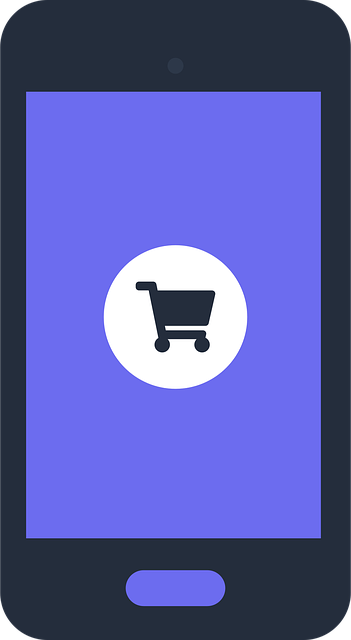Startups and enterprises aiming to stay competitive in today's digital era must first identify manual, time-consuming tasks that hinder productivity. By recognizing these bottlenecks, they can explore AI solutions like chatbots for data entry, customer support, and routine admin work, achieving ai workflow optimization. This step leads to increased efficiency, reduced errors, and better resource allocation, with e-commerce AI personalizing experiences and optimizing pricing. Integrating AI automation tools streamlines processes, enhances collaboration, and enables employees to focus on strategic initiatives, making ai workflow optimization a game-changer for business competitiveness.
In today’s competitive landscape, AI workflow optimization is a game-changer for both startups and enterprises. This article provides valuable insights and actionable tips to help you harness the power of artificial intelligence (AI) and transform your business operations. By understanding your current workflow challenges, identifying suitable AI applications, automating routine tasks, and optimizing team collaboration, you can achieve significant efficiency gains and stay ahead of the curve.
- Understand Your Current Workflow Challenges
- Identify AI Applications for Efficiency
- Automate Routine Tasks with AI Solutions
- Optimize Team Collaboration and Communication
Understand Your Current Workflow Challenges

Before diving into AI workflow optimization, startups and enterprises must first understand their current challenges. Many organizations face similar hurdles when it comes to manual, time-consuming tasks that often lead to errors and decreased productivity. These could include processes like data entry, customer support inquiries, or routine administrative work. By identifying these bottlenecks, companies can pinpoint areas where AI automation agency solutions like AI chatbots and assistants can make a significant impact.
For instance, an AI chatbot can handle initial customer queries, freeing up human agents to focus on more complex issues. Similarly, automated data entry systems reduce the risk of errors and save time. Recognizing these challenges and exploring how AI tools can address them is crucial for achieving ai workflow optimization, leading to increased efficiency and better resource allocation across the organization.
Identify AI Applications for Efficiency

In today’s digital era, AI workflow optimization is no longer a luxury but a necessity for startups and enterprises aiming to stay competitive. The first step in this journey is identifying areas within your operations where AI can bring about significant efficiency gains. This doesn’t necessarily mean implementing elaborate systems; even simple tools like chatbots or ecommerce AI can streamline processes like customer support, product recommendations, and inventory management, respectively. By focusing on these strategic applications, businesses can quickly realize the potential of AI to enhance productivity and reduce costs.
Additionally, leveraging chatbot automation in areas such as order processing, data entry, and initial level troubleshooting can dramatically improve operational efficiency. Ecommerce ai, for instance, can analyze customer behavior, personalize shopping experiences, and optimize pricing strategies. These applications not only save time but also ensure consistency and accuracy across various functions, paving the way for a more agile and responsive organization.
Automate Routine Tasks with AI Solutions

In today’s digital age, startups and enterprises alike can reap significant benefits from integrating AI workflow optimization into their operations. Automating routine tasks with AI solutions not only boosts efficiency but also allows employees to focus on more strategic initiatives. By leveraging artificial intelligence, businesses can streamline processes such as data entry, email management, and customer support, thereby reducing human error and increasing productivity.
For instance, an AI assistant can efficiently handle simple, repetitive queries from customers through chatbot marketing channels, freeing up human agents to tackle complex issues. Similarly, ecommerce automation powered by AI can optimize inventory management, personalized product recommendations, and even predict customer behavior based on historical data. This level of efficiency is a game-changer for startups and enterprises seeking to stay competitive in their respective industries.
Optimize Team Collaboration and Communication

In today’s digital era, AI workflow optimization is no longer an option but a necessity for both startups and enterprises aiming to stay competitive. One of the most impactful areas to optimize is team collaboration and communication. By integrating AI automation tools like sales chatbots, businesses can streamline processes that were once manual and time-consuming. For instance, an AI chatbot can handle initial customer inquiries, qualifying leads, and even setting up meetings, freeing up human agents to focus on more complex tasks that require emotional intelligence and strategic thinking.
This enhanced collaboration doesn’t just improve efficiency; it fosters a culture of transparency and shared goals. AI chatbots can facilitate knowledge sharing by providing quick access to information, ensuring that every team member is on the same page. Moreover, they can be programmed to send regular updates and reminders, keeping everyone informed about project milestones and changes, thereby enhancing overall productivity and reducing miscommunication.
AI workflow optimization is no longer a futuristic concept but a powerful tool for startups and enterprises to streamline operations. By understanding current challenges, identifying relevant AI applications, automating routine tasks, and enhancing team collaboration, businesses can significantly boost efficiency and gain a competitive edge. Embracing these strategies not only improves productivity but also fosters innovation, paving the way for growth in today’s fast-paced digital landscape.
